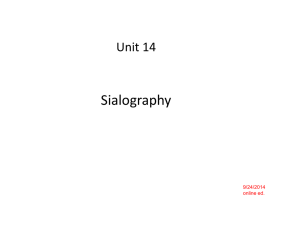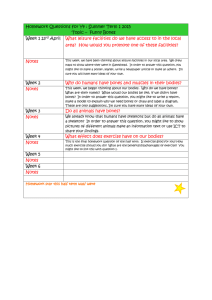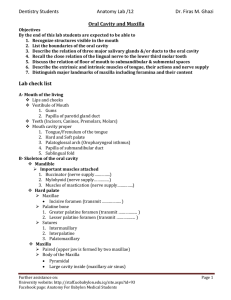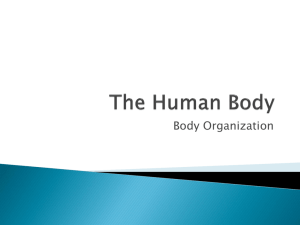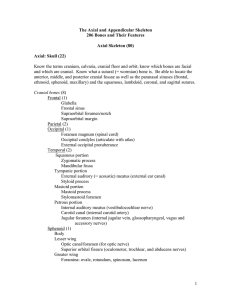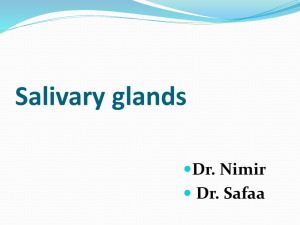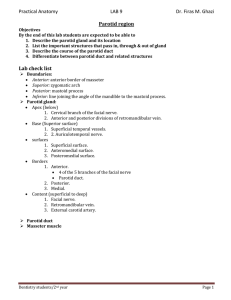Bones 8 cranial bones Frontal Spenoid Ethmoid Occipital 2 parietal
advertisement
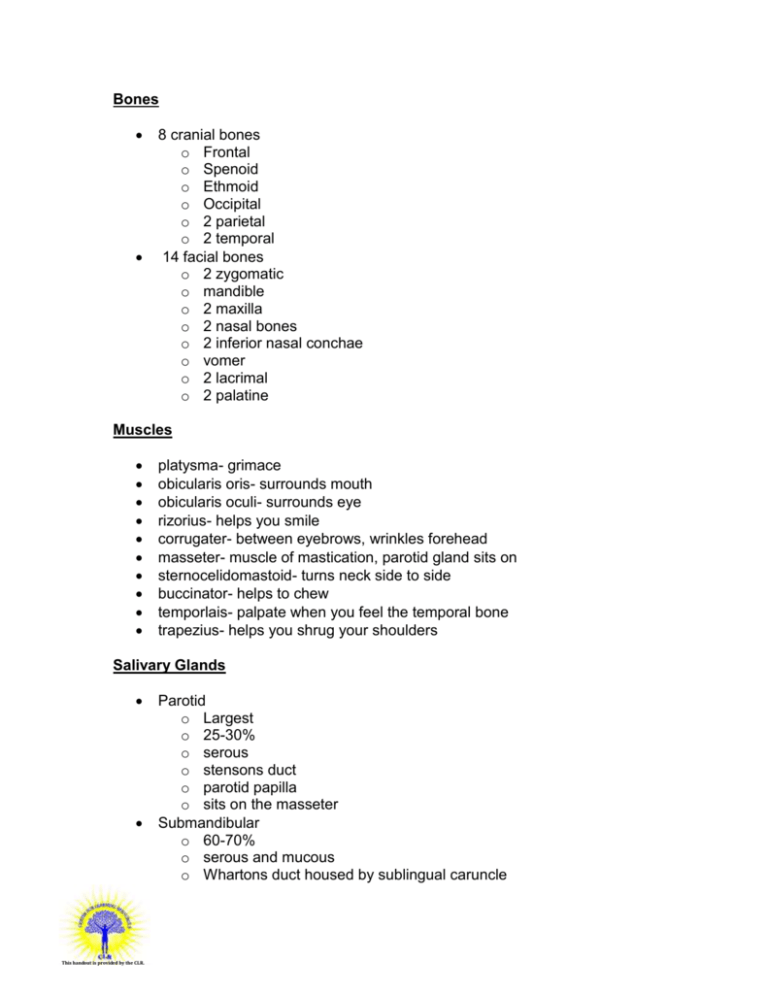
Bones 8 cranial bones o Frontal o Spenoid o Ethmoid o Occipital o 2 parietal o 2 temporal 14 facial bones o 2 zygomatic o mandible o 2 maxilla o 2 nasal bones o 2 inferior nasal conchae o vomer o 2 lacrimal o 2 palatine Muscles platysma- grimace obicularis oris- surrounds mouth obicularis oculi- surrounds eye rizorius- helps you smile corrugater- between eyebrows, wrinkles forehead masseter- muscle of mastication, parotid gland sits on sternocelidomastoid- turns neck side to side buccinator- helps to chew temporlais- palpate when you feel the temporal bone trapezius- helps you shrug your shoulders Salivary Glands This handout is provided by the CLR. Parotid o Largest o 25-30% o serous o stensons duct o parotid papilla o sits on the masseter Submandibular o 60-70% o serous and mucous o Whartons duct housed by sublingual caruncle Sublingual o 5-10% o mostly mucous, vicous o Ducts of Rivinivus, sit on sublingual folds Lymph Nodes Cervical Auricular Occipital Clavicular Submandibular -Foramen cecum is where the thyroid comes from in utero TMJ -synoival fluid -made up of condyle and glenoid fossa Nerve Blocks This handout is provided by the CLR. Trigeminal Nerve- 5th cranial nerve Maxillary Opthamlic Mandibular Maxillary Nasopalatine comes through incisive foramen Greater palatine- gp foramen, across from molars Posterior superior alveolar- max molars Middle superior alveolar- canine to second molar Anterior superior alveolar- anterior teeth Mandibular Inferior alveolar Buccal Mental Lingual

